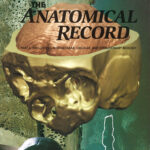 The analysis of endocranial features of fossil hominid remains is a fundamental approach to understanding the course of human evolution. By applying VOXEL-MAN to CT data sets, it is possible to create 3D reconstructions of complete skulls, virtually remove the sediment matrix, and thus examine the hidden morphology of the endocranial surface.
The analysis of endocranial features of fossil hominid remains is a fundamental approach to understanding the course of human evolution. By applying VOXEL-MAN to CT data sets, it is possible to create 3D reconstructions of complete skulls, virtually remove the sediment matrix, and thus examine the hidden morphology of the endocranial surface.
This project examines morphological characteristics of fossil and subfossil human cranial remains from Tanzania and Kenya, as well as modern humans and other hominids.
References
- Günter Bräuer, Christoph Groden, Flora Gröning, Angelika Kroll, Kornelius Kupczik, Emma Mbua, Andreas Pommert, Thomas Schiemann: Virtual study of the endocranial morphology of the matrix-filled cranium from Eliye Springs, Kenya. Anatomical Record A 276 (2), 2004, 113-133.
- Kornelius Kupczik, Fred Spoor, Andreas Pommert, M. Christopher Dean: Premolar root number variation in hominoids: genetic polymorphism vs. functional significance. In Elzbieta Zadzinska (ed.): Current Trends in Dental Morphology Research. University of Lodz Press, Lodz, 2005, 257-268.
Back to VOXEL-MAN Gallery